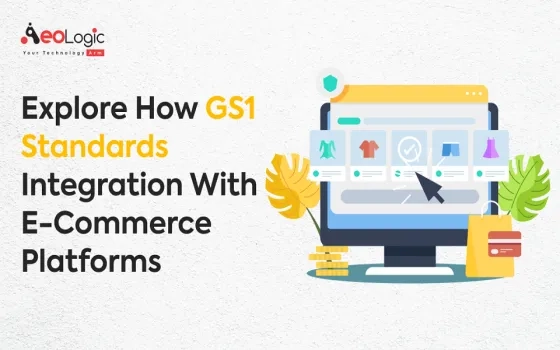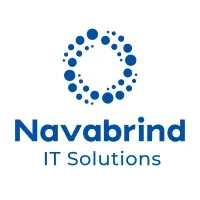GS1 standard is a tool to ensure the rightful identification of items and places all around the world. Many different industries use these standards such as healthcare, transportation, and logistics. Businesses can improve their efficiency by employing the GS1 standards and can enhance their data quality as well.
The Importance of GS1 in E-commerce
I think having a GS1 system is important for every e-commerce business for better operations, efficient inventory tracking, and standardized data transactions.
For the effective nature of services, E-commerce demands valid inputs and quality delivery at the backend processes. The GS1 standards are used to assign unique identifications so that each product can be recognized appropriately. By using this system, companies can easily track their raw materials, works in progress, and finished goods in an organized manner. so that companies can manage their product inventory effectively. It will eventually lead to improved customer satisfaction.
Integration Process of GS1 Standards
To convert the information found on an e-commerce platform in a systematic format that enables the users to track their products more efficiently by integrating GS1 is a multi-step process. By combining all of these protocols, we can expect a seamless flow of relevant, and valid information across all stages. Here's a detailed look at each step involved in this process:
Obtaining a GS1 Company Prefix: To make our business legal, the first thing we do is to get a GS1 Company Prefix. This number is an essential element in creating the Global Trade Item Numbers (GTIN). Through these numbers, the product can be uniquely identified in the market. Businesses can acquire this prefix through their local GS1 member organizations.
Generating Product Identifiers: Once the company prefix is obtained, the business will be able to generate unique identifiers for its products. Each product as an identifier so that it can be tracked and managed effectively throughout its life cycle.
Barcoding and Labeling: After identifying different items, now we can identify all these items with barcodes, or we can put RFID tags on each of them These barcodes after getting ready, are then printed on the specific product packaging or labels. This is very important to automate and manage different products' records effectively across various stages of the supply chain.
Integrating with Internal Systems: In order to successfully execute the GS1 standards, there's a need to fully integrate it with other internal systems to allow maximum utilization with inventory management, point of sales, and logistics software. This will enable each system to read and understand GS1 codes to maintain uniformity and data precision.
Uploading Data to Product Databases: E-commerce industries stores every product's information in a digital database, where it's easily approachable. Once the GS1 standards are integrated businesses need to make sure that their internal database is updated with this information. This information should not just be the identifier of the product but must include additional data as well, to use the GS1 standard.
Partner Collaboration: Strategy is needed to collaborate the supply chain with the supply chain stakeholders, suppliers, distributors, and retailers, to ensure they would be equal enough to absorb GS1 criteria. Through the combined efforts of all members such as, the supply chain heads, the concerned stockholders we can make useful decisions and maintain stock levels accurately.
Training and Compliance: Since the new framework requires a comprehensive understanding to make a smooth transition the employees must be informed and trained on the new standards that the company has set. The businesses should also make sure they are meeting the standards being established by the regulating authorities.
Ongoing Maintenance and Updates: Ensuring that the system is up to date by doing periodic maintenance checks is pivotal. This will ensure that you have the most current and updated data at all times.
Businesses need to follow some initial steps to know how to successfully incorporate GS1 Standards for FMCG Manufacturers to ensure their ROI. The integration of these standards would result in a system that will work for improved global supply chains and will enhance efficiency through maintaining a standard level of transparency. This encourages the long-term business partners to trust and fully rely on each other for the production at peak levels
Benefits of GS1 Standards Integration
Integrating GS1 standards into e-commerce platforms offers numerous benefits, enhancing various aspects of business operations:
Enhanced Data Accuracy: GS1 standards play a key role in providing valuable product information through unique identification numbers. Lowering the possibility of errors would boost the bottom line by mitigating any chances of returns or complaints.
Improved Inventory Management: GS1 standards make it easier for an organization to manage their inventory, and know the stock levels in real time. E-commerce businesses with an effective inventory system can manage their stock better, and can provide the right products to the customer as and when required.
Better Customer Experience: When a company provides all information from where the product is coming, detailed manufacturing details, and how it will be delivered makes the customer feels like transparency, and they are more likely to rely on that company for that product. This will make the customers more confident not only about what they are
Streamlined Supply Chain Operations: Using the GS1 standards for shipment or inventory will ultimately improve and centralize the flow of operations in the supply chain. Tracking systems can provide e-commerce businesses to efficiently manage demand and supply. Also, through real-time tracking, shipment processes can happen with minimized risk of errors and hence ensuring customers receive the products in time.
Global Standardization: When we use GS1 standards that are recognized globally, so it makes it accessible to go internationally and can access any e-commerce platform most effectively. The companies, with their proper planning, can spread out to newer markets. Due to minor product identification constraints, they wouldn't face any hurdles.
Compliance and Regulatory Advantages: Most of the industries have their system to track the product and information. Standardizing the business procedures according to GS1 protocols and standards will help businesses to be more efficient and evade any case of legal problems and consequent fines.
Efficient Product Recalls: Through GS1 standards, we can quickly track the identified product that needs to be retrieved. By doing this effectively, we reduce the cost impacts and overall time for a swift response.
Enhanced Data Analytics: The data which is generated through using the GS1 standard for tracking, can then further be used for advanced data analytics purposes. Through this, better decisions can be made to stay at the top of the market.
Reduction in Counterfeiting: The Unique IDs in GS1 standards is really benefical as it would edge out astonishingly forged products from entering, this would inadvertently safeguard the users as well as the brand image.
Eco-friendly Operations: Through efficient and intelligent inventory management and supply chain practices, the GS1 standard can really push corporations to use better sustainable approaches and to minimize the waste being generated.
This system not only improves operations but also provides an opportunity to engage the customers economically and create a valuable business for the organization. Moreover, this will lead to benefits in the long run, making its importance clear in the ever-changing world of e-commerce.
Final Words
The integration of the GS1 standards system will bring more efficient ways to conduct businesses, hence leading to better customer satisfaction. Yes, implementing this is a challenge, but in the long run, businesses will reap benefits from this.















